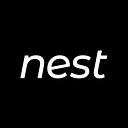Distributed Oracle Project NEST Adds DAO Governance Features
NEST’s update to v3.6
NEST, a project developing a distributed price oracle network based on Ethereum blockchain, has announced its update to v3.6. New features and changes have been made to the protocol, including the implementation of decentralized governance, representing a major step towards decentralization.
Implementation of Decentralised Governance
The most important aspect of the announced upgrade to v3.6 is probably the implementation of decentralized governance.
With the launch of NEST DAO Governance, developers’ privileges have been abolished and holders of NEST tokens, an ERC-20 token, issued on NEST protocol can now participate in governance voting. Proposals for changes and updates to the protocol approved by more than 51 percent of voters will be reflected in the protocol immediately without signature. Users wishing to suggest a change to the protocol must submit the proposal to Github and actually write the code.
Other changes brought by the upgrade to v3.6 include:
- Complete removal of the dividends with all protocol income used to re-purchase NEST tokens
- Changes to the size and fees of quotations (the act of a miner quoting a price in NEST)
- The quotation validation period changed from 25 blocks to 20 blocks
- NestNode token rewards (tokens held by NEST initial investors and supporters) will be separated from the quotation process and automated contracts will be implemented.
Future development plans
At an AMA (Ask Me Anything) held before the launch of v3.6, NEST talked about its development plans after the launch of v3.6.
According to Tina Zhang, the head of NEST LABS, the organization in charge of NEST’s global rollout, stated that the keyword for NEST development in 2021is “demand”. They will focus on developing financial products based on NEST’s price information flow so that NEST and the entire crypto industry will be further adopted by the public to become a price protocol that supports Ethereum’s economy, she explained.
More specific plans include:
- Launch of CoFiX 2.0, an AMM (Auto-Market-Maker) based on the NEST protocol
- Launch of Parasset, an asset that is issued in parallel with the underlying token on a 1:1 basis based on NEST price information
- Development of Tank, a lending protocol and Fort, a perpetual contract protocol
- Solving issues related to gas savings and the randomness of miners
- Researching examples of financial products based on the price information flow of the NEST protocol
Non-cooperative gaming system
NEST describes its protocol as a “non-cooperative gaming system” rather than just an oracle. In Game theory, which analyses the strategies and behavior of multiple stakeholders, non-cooperative gaming represents games where all the participants are expected to act individually to maximize their individual interests without forming alliances.
As described above, the oracle system provided by NEST is designed to allow anyone to get a correct price without having to trust the price providers (called a “miner”) because if a miner, whose role is to bring an off-chain price for a given asset, presents an inappropriate price that is diverged from the actual market price, anyone can tap into the difference between the price quoted by the miner and the actual price to find an opportunity for an arbitrage, which will result in the adjustment of the quoted price to the correct one matching the market.
On its blog, NEST described the development of blockchain from a perspective of non-cooperative gaming theory as follows:
BTC achieves data anti-tamper (transfer) through the non-cooperative game, ETH achieves logic anti-tamper(smart contract)through the non-cooperative game, NEST achieves exchange rate anti-tamper(price information flow) through the non-cooperative game. From this point of view, other oracles are just price data movers, a single product with only price-output while NEST Protocol is an ecosystem and a real non-cooperative gaming system.
